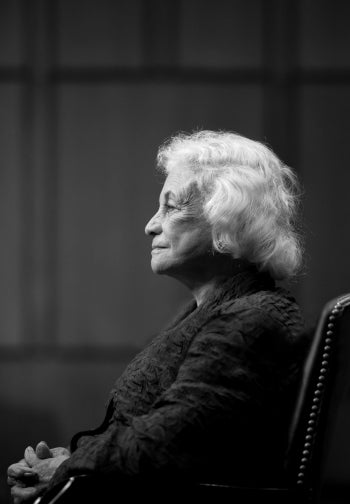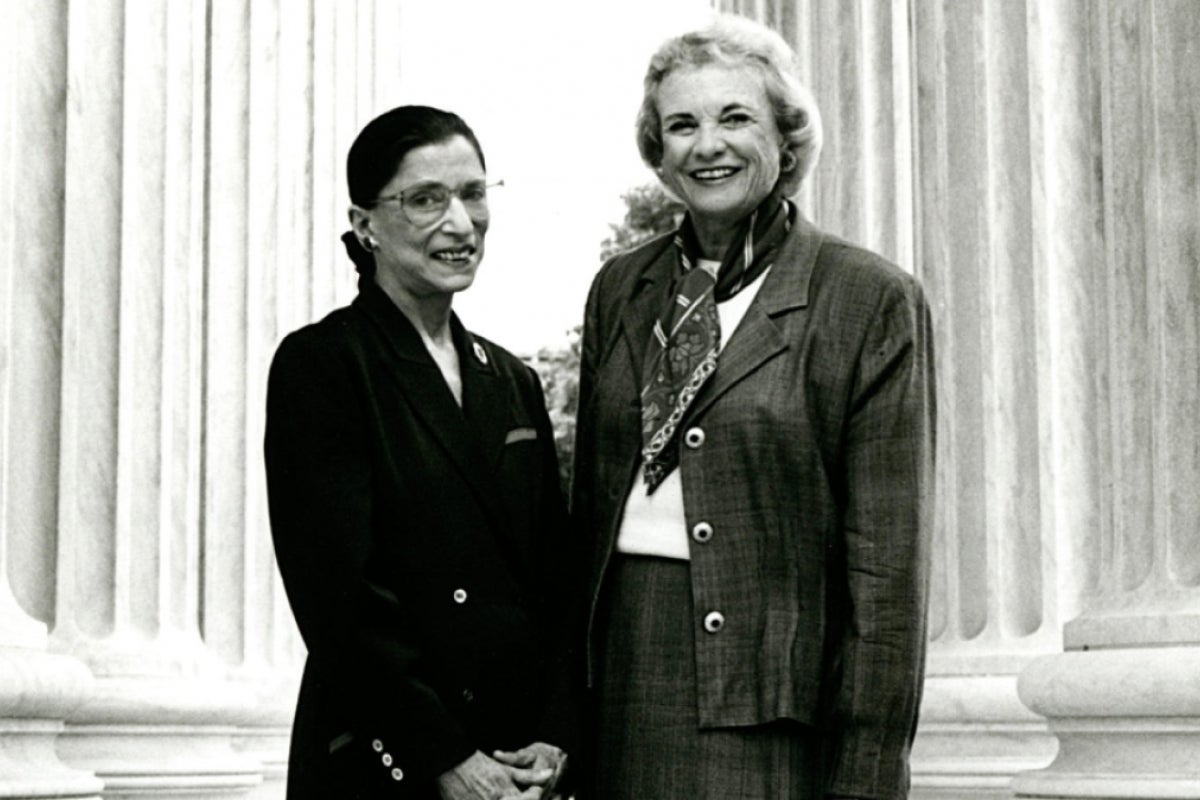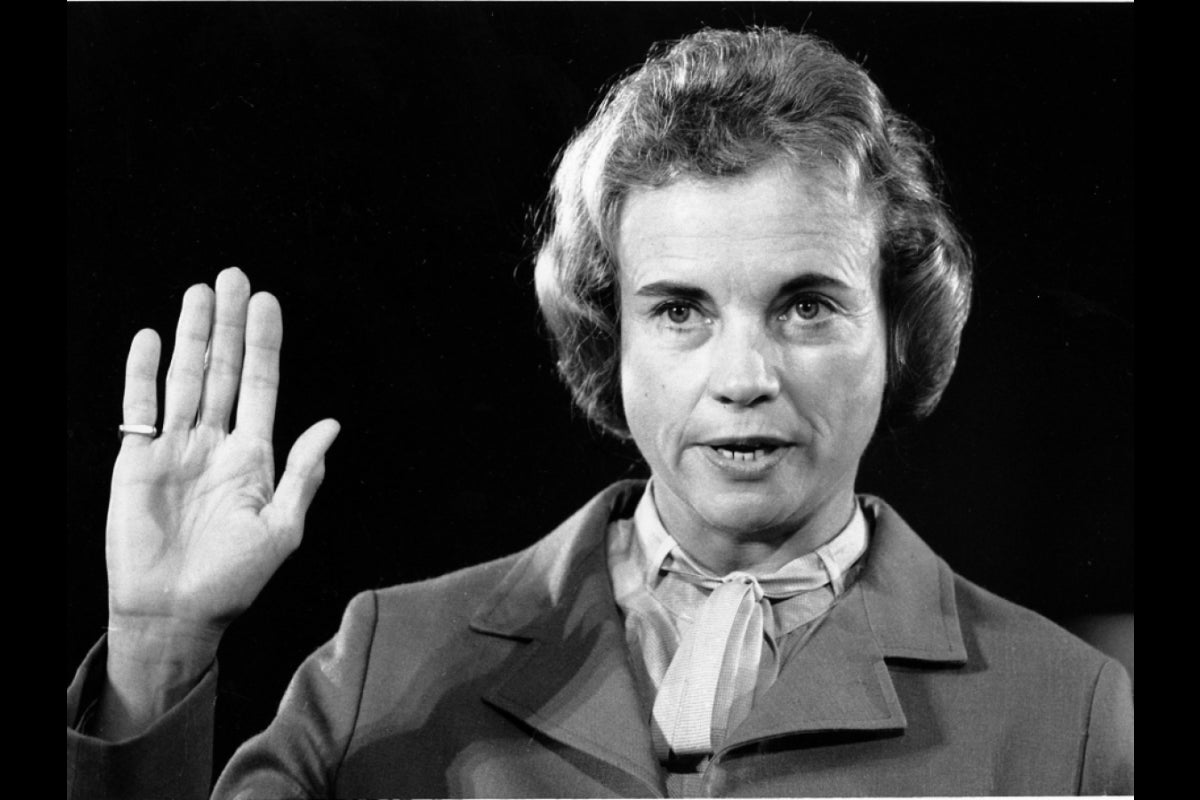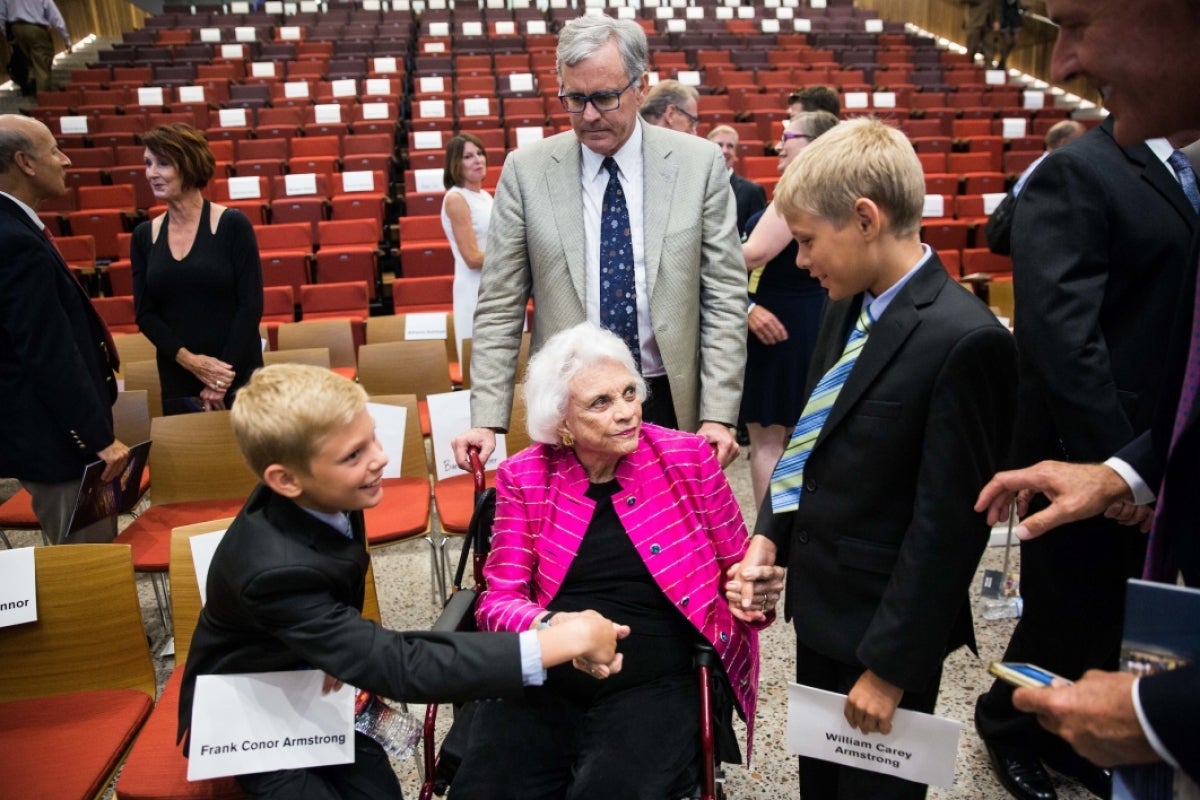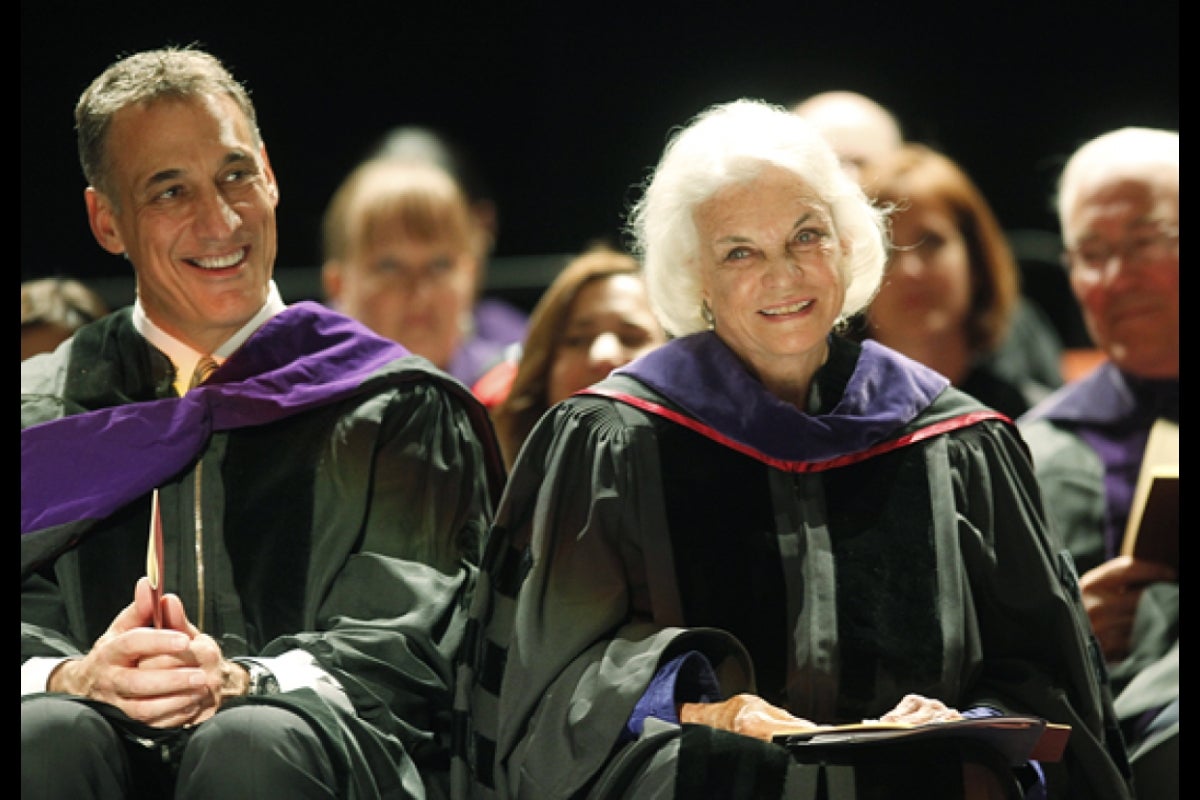Judicial icon, groundbreaking Arizonan Sandra Day O’Connor dies at 93

Justice Sandra Day O’Connor is pictured in her chambers at the U.S. Supreme Court. Photo courtesy of ASU Law
Editor’s note: This story is featured in the 2023 year in review.
Sandra Day O’Connor, the first woman to serve on the U.S. Supreme Court and the namesake of Arizona State University’s law school, died Dec. 1 at age 93.
A trailblazer throughout her career, she made history as the first American woman to serve as a state Senate’s majority leader, as well as the first contemporary woman to have a law school named after her.
"She was not only a role model and inspiration for women in legal practice and the judiciary but an important figure in shaping our nation's legal history," said Stacy Leeds, Willard H. Pedrick Dean and Regents Professor of Law at the Sandra Day O'Connor College of Law at ASU.
"The fact that she was a highly visible first woman in countless professional roles throughout her career is remarkable, but we celebrate even more her impeccable performance in each of those roles. She embodied the type of leader, legal professional and public servant we want our community to aspire to be. She normalized women as leaders, and she personified excellence."
The ASU College of Law was half a century old in 2006 when President Michael Crow announced it would be named in O’Connor’s honor. In 2018, O’Connor again lent her name to an ASU institution: the Ambassador Barbara Barrett & Justice Sandra Day O’Connor Washington Center in our nation’s capital.
“We’ve lost a true American trailblazer,” Crow said. “From the time she was a young girl growing up in eastern Arizona, Sandra Day O’Connor never let people tell her she couldn’t do something. ASU embraces that spirit. We are proud that she gave her name to the Sandra Day O’Connor College of Law and to the Ambassador Barbara Barrett & Justice Sandra Day O’Connor Washington Center at ASU, where we all hope to exhibit her can-do spirit.”
A remarkable life
O’Connor grew up working summers on her family’s Lazy B Ranch in southeastern Arizona, and earned a law degree from Stanford University in 1952. Despite graduating third in her class of 102 students, she struggled to find work as a lawyer because of prejudices against women.
After settling with her husband, John, in the Phoenix area, she became an assistant attorney general for Arizona in 1965, before being appointed to the state Senate in 1969 by Gov. Jack Williams. She was elected to the same seat in 1970, and again in 1972, and soon after made history when she became the Republicans’ majority leader.
She began a judicial career in 1974, leaving the Senate to serve as a judge in Maricopa County Superior Court, then on the Arizona Court of Appeals in 1979 after being appointed by Gov. Bruce Babbitt.
In 1981, President Ronald Reagan nominated O’Connor for the U.S. Supreme Court, and she was swiftly — and unanimously — approved by the Senate. She joined the court on Sept. 25, 1981, serving for more than 24 years before retiring on Jan. 31, 2006, to care for her ailing husband.
A moderate Republican, she was often a swing vote on the divided nine-member panel. Among her notable majority rulings were Boy Scouts of America v. Dale, which held that troop leaders could not be discriminated against based on sexual orientation, and the landmark Bush v. Gore case that effectively decided the 2000 presidential election.
A legacy at ASU
At the time of the law school naming in 2006, Crow said the honor was given to imbue the law school with aspirations of the integrity, public service and personal independence demonstrated by O’Connor: “She represents what we want this school to be,” he said.
“I'm very proud to be associated with the college of law in this way,” O’Connor said in 2006. “I remember when this law school started and how badly it was needed.”
ASU Law was the first law school in the nation to be named for a contemporary woman. Janet Napolitano, then governor of Arizona, said, “She was a role model to so many of us who came after her. When I started law school, about one-third of the students were women, and just years before that, there were hardly any women. Sandra Day O'Connor helped change that.”
ASU established the O’Connor Justice Prize in 2014, an award recognizing extraordinary people who promote the rule of law and judicial independence around the world. It has since honored such luminaries as former President Jimmy Carter; Louise Arbour, former United Nations high commissioner for human rights; and Nadia Murad, co-recipient of the 2018 Nobel Peace Prize.
A frequent visitor to the law school, O’Connor inspired students to strive for excellence and serve the greater good. She was in attendance for the grand opening of the school’s Beus Center for Law and Society in August 2016, where she was joined by Sen. John McCain in celebrating the new home for ASU Law on the Downtown Phoenix campus.
Two years later, her name and spirit were honored with the grand opening of the Barrett & O’Connor Washington Center in our nation’s capital. The center provides a presence in Washington, D.C., for several ASU initiatives and is home to the Sandra Day O’Connor College of Law's International Rule of Law and Security program.
Learn more about Justice O’Connor’s life, career and impact on Arizona State University.
Written by Lindsay Walker and Erik Ketcherside.
More Law, journalism and politics

Cronkite School launches Women Leaders in Sports Media live-learn program
Women in a new sports media program at Arizona State University got a solid game plan from a sports veteran at an Aug. 20 welcome event.“Be humble, be consistent and be a solver,” Charli Turner…

ASU center to host the Pursuits of Education and Excellence Symposium
The Center for the Study of Race and Democracy (CSRD) at Arizona State University is introducing the Pursuits of Education and Excellence Symposium as part of an ongoing initiative to commemorate the…
ASU journalism students dominate NATAS Student Production Award nominations
Students at Arizona State University’s Walter Cronkite School of Journalism and Mass Communication dominated the nominations field of the prestigious Rocky Mountain Southwest Chapter of the National…
